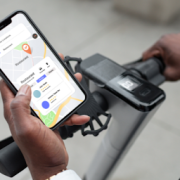Over recent years, cybersecurity has grown as one of the most critical issues to be considered by any individual and professional all around the world. The fast technological advances have improved various help but simultaneously spread all the entrances to a new era of cyber dangers.
Cybersecurity threats are very much possible to develop in the future year 2024 as cyber criminals utilize quite refined methods to manipulate the exposures. Kalyan Panel Chart contains the elementary record of those patterns that help analyze the Kalyan Matka game and predict outcomes.
Now we shall talk about the top cybersecurity threats that individuals and organizations need to be on the lookout for in 2024. We find a few such factors listed below:
Ransomware Attacks: A Growing Menace
Ransomware has been an enduring menace in recent years and will not reduce its strength in 2024 either. This type of malware encrypts a target’s data and causes it inoperable until the ransom is paid.
The most hazardous things about ransomware are that it can strike not just end-users but big institutions, like clinics, state agencies, and companies.
In 2024, ransomware episodes are predicted to be better attentive and cultivated. The cyber criminals may use developed modes of encryption that will create it difficult for the target to regain his information without spending the ransom cash.
Again, Ransomware-as-a-Service platform Coalition will improve the aggressor participation with less action.
Phishing and Social Engineering: A Way to Exploit Human Vulnerability
Phishing has remained one of the most successful ways for cybercriminals to breach databases of sensitive information.
Accordingly, in 2024, phishing attacks are foreseen to be even more sophisticated because attackers will make use of AI and machine learning in crafting highly convincing phishing emails-which would be indistinguishable from real communications.
Social engineering will also remain one of the major threats because, through this technique, people are convinced to reveal confidential information.
Deepfake technology can be used by cybercrime perpetrators to send audio or video messages sounding like it comes from a person of trust. It makes it easier to deceive the targeted victim.
This amalgamates with phishing through social engineering, making this technique threatful for individuals and organizations alike, owing to the inherent trust people have in digital communications.
Supply Chain Attacks: The Emerging Headache
Supply-chain episodes have gained renown over the last pair of years with high-profile happenings like the SolarWinds violation that obtained in dawning the defects within complicated supply chains.
“In 2024, collection chain attacks will trend upward as cybercriminals increasingly recognize the leveraging possibility of compromising a single supplier to gain access to many organizations.”.
Most of these usually involve third-party vendors, software providers, or hardware manufacturers injecting malicious code in products or services that later reach customers.
Once the deployed product is compromised, then attackers can access sensitive data, disrupt operations, or even launch further attacks on connected systems.
As supply chains get increasingly integrated and global, supply chain attacks are only going to continue going up, hence proper onboarding of vendors with deeper due diligence and security controls will be required from organizations.
Internet of Things (IoT) Vulnerabilities: Expanding the Attack Surface
The proliferation of IoT devices revolutionized both ways of living and working; simultaneously, it brought about a lot of new cybersecurity challenges.
Normally, IoT devices are designed with limited security features; hence, the range of devices-from smart home appliances to industrial control systems-would be highly susceptible targets for cybercriminals.
In 2024, IoT growth will increase the attack surface in depth. IoT devices can be used by hackers to perform DDoS attacks, gaining unauthorized access over networks or even taking control of critical infrastructure.
The more deeply IoT becomes integrated into daily life, the more device security will top the list of items of concern for both manufacturing and user sides.
Artificial Intelligence in Cyberattacks: AI and ML
While AI and ML have been instrumental in improving cybersecurity protection, they again are living weaponized by cybercriminals.
The usage of AI and ML to automate duties like the title of exposures, framing of phishing emails, or ways to avoid detection by safety procedures in cyberattacks will resume to rise in 2024.
AI-based attacks could learn to adapt to an environment, thereby turning out to be effective and hard to defend against. For instance, AI-driven malware can make some changes in its pattern of behavior to avoid traditional detection by antivirus software.
Furthermore, such malware attackers may review large datasets using ML algorithms to identify patterns and vulnerabilities related to potential future attacks. While AI and ML continue to evolve, so will the threats brought about regarding cybersecurity.
Cloud Security Risks: Safeguarding Data in a Hybrid World
Cloud computing has drastically shifted how organizations store and manage data today, giving them unparalleled scale-up or scale-down capabilities as needed.
However, this shift to the cloud has also presented new security risks. In 2024, one of the major concerns will be cloud security as more organizations begin adopting a hybrid cloud environment that combines both on-premises and cloud-based resources.
Cybercriminals could, therefore, target cloud infrastructures for sensitive data access, service disruption, or to carry out further attacks on connected systems.
The commonly expected vulnerabilities to be exploited in cloud environments include misconfigurations, weak access controls, and poor encryption.
Therefore, detailed cloud security strategies, such as routine audits, intensive encryption, and continuous monitoring, will have to be employed by the organizations in order to avoid these risks.
Cryptojacking: The Silent Menace
Cryptojacking-a form of aggression wherein assailants seize a target’s computing help to mine cryptocurrency-has acquired speed in recent years.
The hazard will still be present in 2024, since this stays one of the forms cybercriminals can efficiently benefit from their marks, given the growing favor of cryptocurrencies.
Because cryptojacking, unlike ransomware or other overt attacks, is often designed to go unnoticed, cybercriminals can exploit the victim’s resources for an indefinite period of time.
This could result in degraded system performance, higher energy costs, and shorter hardware lifespans. For as long as there is lucrative income coming from mining cryptocurrencies, people and organizations will have to continue finding countermeasures toward attempts at cryptojacking.
Conclusion
The cybersecurity landscape in 2024 will be more challenging than ever, with cybercriminals not stopping in finding and developing new methods to leverage the already existing set of vulnerabilities.
To effectively counter these oncoming threats, the onus would be upon people and organizations to go all proactive in respect of cybersecurity through better security practices and a culture of security awareness.
This will not only better equip them with protection against evolving cyber threats but also make them more resilient.









Comments